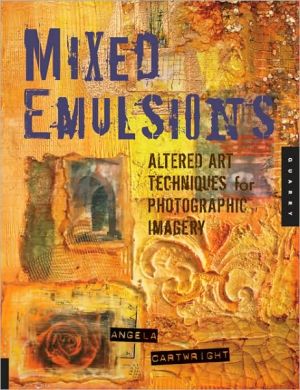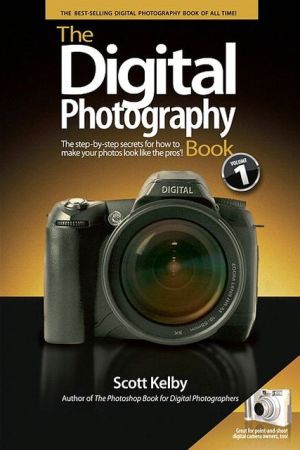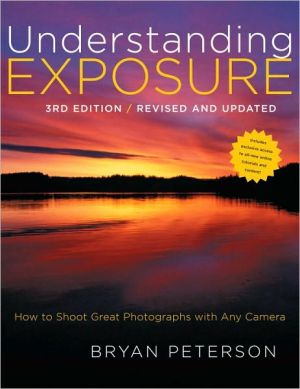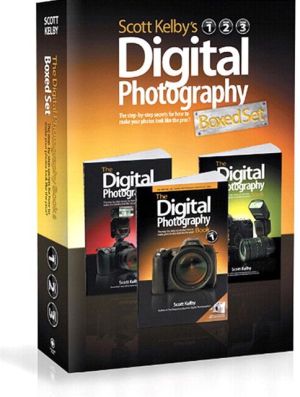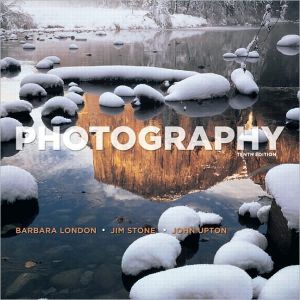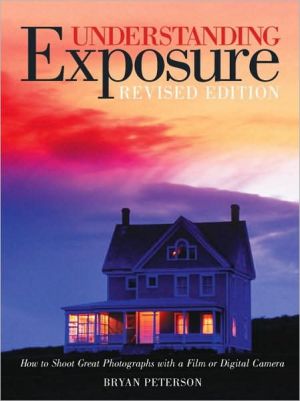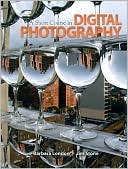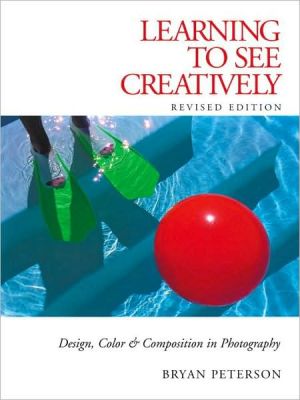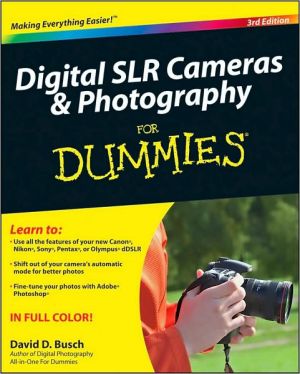Mixed Emulsions: Altered Art Techniques for Photographic Imagery
Over 25 unique effects illustrated with process photos, finished examples, and variations.\ Mixed Emulsions is a follow up to Karen Michel's book, The Complete Guide to Altered Imagery. Mixed Emulsions: Altered Art Techniques for Photographic Imagery takes a slightly different tact, bringing traditional and digital photography front and center, showing the many ways that photographic imagery can be manipulated, not electronically, but using various art materials and techniques. The chapters...
Search in google:
Over 25 unique effects illustrated with process photos, finished examples, and variations. Mixed Emulsions is a follow up to Karen Michel's book, The Complete Guide to Altered Imagery. Mixed Emulsions: Altered Art Techniques for Photographic Imagery takes a slightly different tact, bringing traditional and digital photography front and center, showing the many ways that photographic imagery can be manipulated, not electronically, but using various art materials and techniques. The chapters explore ways to add color (paints, oil sticks, watercolors, inks), ways to add texture (embossing powders, gessos, pastes, wax), and special effects (printing on unusual substrates, imprinting, photo mosaics, using tissue, fabric, cardboard). Daniel Lombardo - Library Journal The digital photography revolution has freed us from the expense of film and the bother of learning the mechanics of aperture, focus, and light settings. Some argue that the cost may be the loss of the edgy creativity that can be achieved with the classic SLR film camera. Both Blair and Cartwright bring us books that inspire the experimental use of images, before and after they leave the digital camera. Blair (The Glossary of Digital Photography) uses the seemingly endless manipulations of Photoshop to create images that are in styles he calls photoimpressionism, neomysticism, and neosymbolism. He defocuses his camera, uses digital infrared, and even experiments with digital toy cameras.Accomplished actress and artist Cartwright takes digital images, photos on film, and Polaroids and manipulates them with an array of traditional art materials and techniques. She adds color with acrylic paints, oil sticks, watercolors, dry pigments, and inks. For texture she uses embossing powders, gessoes, pastes, and wax, and for special effects she experiments by printing photos on unusual substratum, by imprinting, and by using tissue and fabric. Both books accomplish their goal admirably, and both are highly recommended.
\ Library JournalThe digital photography revolution has freed us from the expense of film and the bother of learning the mechanics of aperture, focus, and light settings. Some argue that the cost may be the loss of the edgy creativity that can be achieved with the classic SLR film camera. Both Blair and Cartwright bring us books that inspire the experimental use of images, before and after they leave the digital camera. Blair (The Glossary of Digital Photography) uses the seemingly endless manipulations of Photoshop to create images that are in styles he calls photoimpressionism, neomysticism, and neosymbolism. He defocuses his camera, uses digital infrared, and even experiments with digital toy cameras.\ Accomplished actress and artist Cartwright takes digital images, photos on film, and Polaroids and manipulates them with an array of traditional art materials and techniques. She adds color with acrylic paints, oil sticks, watercolors, dry pigments, and inks. For texture she uses embossing powders, gessoes, pastes, and wax, and for special effects she experiments by printing photos on unusual substratum, by imprinting, and by using tissue and fabric. Both books accomplish their goal admirably, and both are highly recommended.\ —Daniel Lombardo\ \ \
